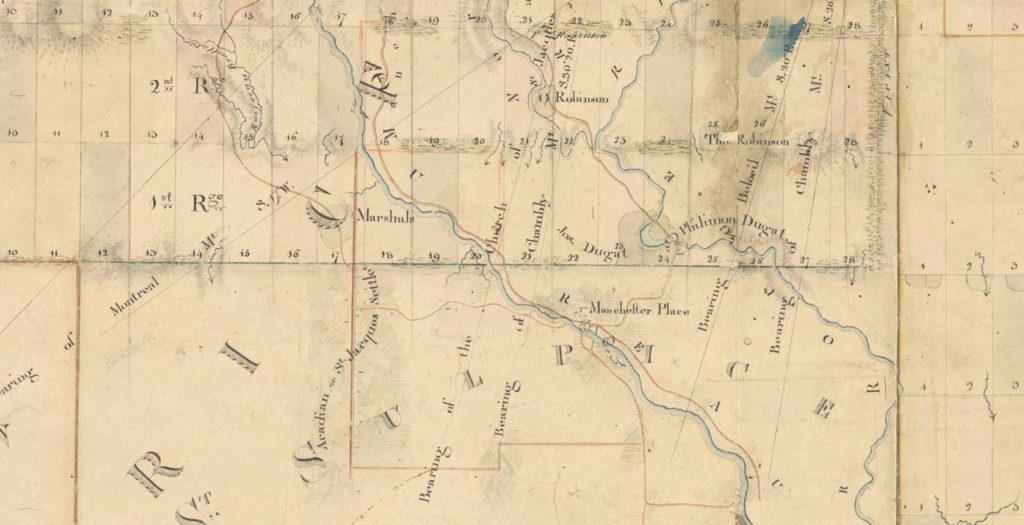
The “very little had yet been granted” written by Bouchette refers to a few thousand acres that were earlier awarded to Loyalist entrepreneurs and military, who sold to investors but most went to British immigrants from Ireland and some from Scotland and England. All were fleeing economic uncertainty or the endemic religious and political unrest.
It is important to point out that, at that time, land tenure was evolving from « Seigneuries » where « censitaires » were renting land to « franc et commun soccage » or privately held land. There was no formal Land Registry system (it was only established in 1830) to take into account the transactions that took place between the holders of these initial titles and private investors. Transactions were normally documented by Public Notaries. One such transaction took place in 1816 or earlier and led Philémon Dugas, Isaac Dugas and Pierre Richard to build a sawmill on lot 24 in Range 1 belonging to Pierre Richard. Although no evidence is available to determine from whom the lot was purchased, a notarial deed confirms the acquisition of the lot by the partnership. The Dugas mill started industrial development in the Township and led the way for many other New England entrepreneurs attracted by the opportunities to develop saw mill and lumbering enterprises.
Aware that land was starting to be occupied, the government opened Rawdon Township for settlement in July 1820 when the first Tickets of Location were issued. In May 1821, the government appointed Alexander Rea as the Crown Land Agent for Rawdon with the responsibility of issuing these Tickets of Location and enforcing the obligations of settlers, namely, building a house, cultivating a few acres of land, paying the location rent. He was required to find solutions on any land issues that may arise.
For more details on the early days of settlement, a link to Daniel Parkinson's "Rawdon Township Opened to Settlers in 1820" is available on this site.
